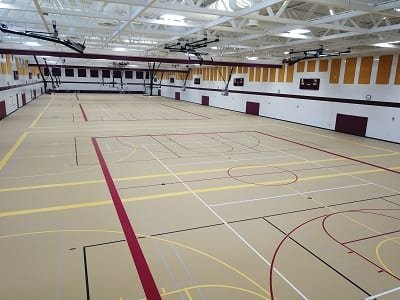ANTI-STATIC / ESD FLOORING SERVICE
ANTI-STATIC FLOORIN
Anti-static flooring services involve the installation of flooring systems designed to control static electricity in environments where electrostatic discharge (ESD) can be detrimental. These services are commonly used in industries such as electronics manufacturing, healthcare, telecommunications, and other settings where sensitive electronic equipment, explosive materials, or critical processes are present. Here are key points about anti-static flooring services:
-
Purpose:
- The primary purpose of anti-static flooring is to prevent the buildup of static electricity and discharge it in a controlled manner. This helps protect electronic equipment and sensitive processes from damage caused by electrostatic discharge.
-
Material Composition:
- Anti-static flooring materials may include conductive or static-dissipative materials. These materials are designed to provide a controlled path for the dissipation of static charges.
-
Types of Anti-static Flooring:
- Conductive Flooring: This type of flooring allows the controlled dissipation of static charges and is often used in areas where very low resistance is required, such as data centers or laboratories.
- Static-Dissipative Flooring: This type of flooring has a higher resistance than conductive flooring and is suitable for environments where a balance between static dissipation and personnel comfort is needed, such as in healthcare settings or cleanrooms.
-
Applications:
- Electronics Manufacturing: Anti-static flooring is crucial in electronics manufacturing facilities to protect sensitive electronic components from electrostatic discharge.
- Healthcare Facilities: In healthcare settings, anti-static flooring helps prevent the buildup of static electricity near sensitive medical equipment.
- Data Centers: Data centers use anti-static flooring to safeguard servers and other electronic equipment from static charges that can damage components.
- Explosive Environments: Industries dealing with explosive materials, such as munitions manufacturing, require anti-static flooring to minimize the risk of static sparks.
-
Installation Process:
- Proper installation of anti-static flooring involves precise surface preparation and the application of conductive or static-dissipative materials. Installation should be carried out by professionals to ensure effectiveness.
-
Maintenance:
- Regular maintenance is essential to preserve the anti-static properties of the flooring. Cleaning procedures should be in accordance with guidelines provided by the flooring manufacturer.
-
Testing and Certification:
- Anti-static flooring systems are often tested and certified to ensure they meet specific electrical resistance standards. Regular testing may be required to maintain certification.
-
Personal Grounding:
- In conjunction with anti-static flooring, personnel in these environments may use ESD control footwear or grounding wrist straps to further reduce the risk of electrostatic discharge.
-
Health and Safety Compliance:
- Compliance with health and safety regulations, as well as industry standards, is critical when installing anti-static flooring, especially in environments with specific safety requirements.
Related Project


